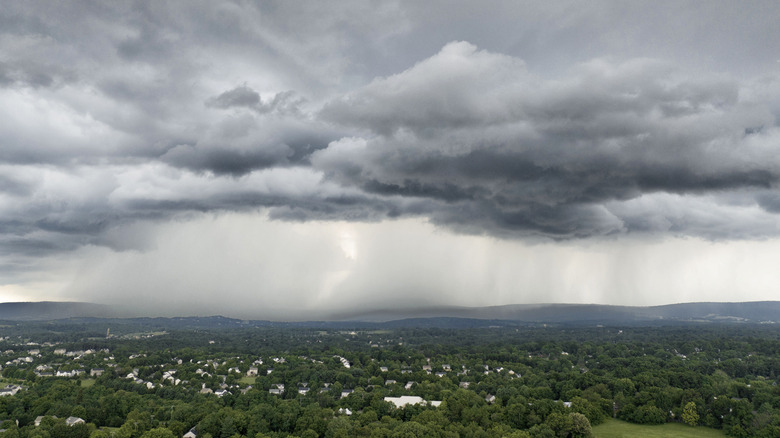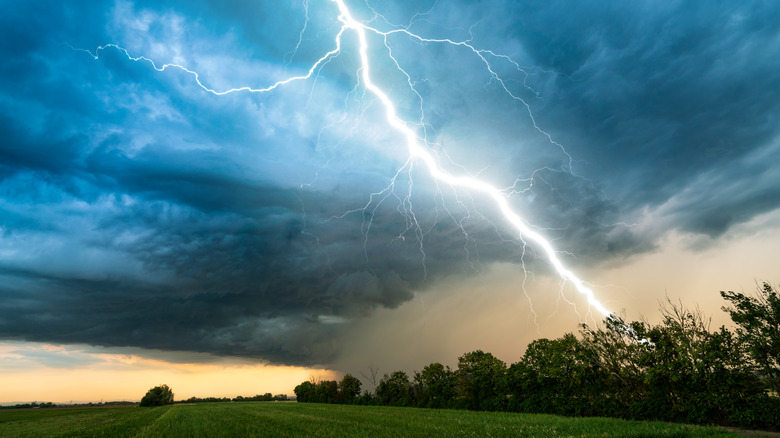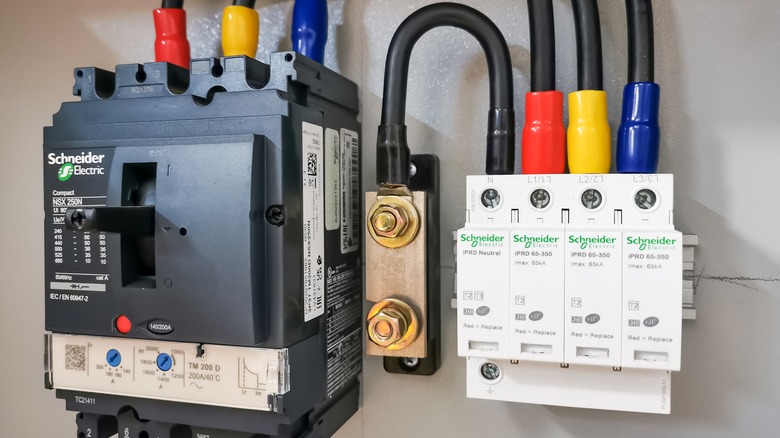The Risk You're Taking When Using A Laptop During A Storm
Dominant force on this planet humans may think we are, it's sometimes humbling to consider just how vulnerable we can be to the fury of nature. Much of the world is very much reliant on technology, for everything from heating our homes to ensuring broadband access. Elaborate power networks have been installed around the world to maintain this, but in the face of severe storms, natural disasters and the like, great care must be taken.
With thunderstorms, the great unpredictability of the location of potential strikes means that far-reaching protection just in case is vital. A surge caused by an unfortunately-located bolt of lightning could immediately spell doom for our devices.
Laptops are as vulnerable to this as any other everyday electronics, and there are some additional concerns to bear in mind that are unique to them, too. Here are some concerns to bear in mind if you're working away on a document or posting to X on a laptop when a storm rolls in.
The laptop battery situation
The key distinction of a laptop, of course, is that it boasts a rechargeable battery. This means that it can be used away from the power supply for a limited time, the portability and versatility that ardent laptop users adore. However, if your area is in the grip of a protracted storm, you will inevitably need to connect your device to the mains sooner or later. Sooner is the more likely of the two, as well: if a full charge tends to last about 6 to 8 hours (considerably less with intensive use, such as when gaming), those warning pop-ups can start appearing rather sooner than you might like. It even happens to the laptops with the most impressive battery life.
When they do, then, is it safe to connect your laptop to the mains? Generally speaking, perhaps not.
Trey Eiland of 5Q Partners explained the dangers, Reader's Digest reports. As Eiland bluntly put it, "that laptop is going to get fried" if a strike happens to hit your home while the device is plugged in. As with so many other dangerous weather extremes, however, there are ways to protect your property and yourself from these effects.
How power surges happen and how to protect against them
Power surges aren't solely caused by lightning strikes, whether direct or indirect. Old or damaged cables, having a lot of devices powered by a single outlet, and a boost caused by the restoration of the system after an outage can all have the same effect. They can strike at any time, and be potentially catastrophic on a widespread scale. We're not entirely at their mercy, however.
Many homes protect their laptops and other appliances by means of surge protectors. These handy little devices can prevent sudden jumps in energy from interfering with connected devices, by means of an MOV and semiconductors. The damage that can be caused is as variable and unpredictable as the factors that can result in such a surge in the first place, so it can be very important to invest in surge protectors.
Laptops, then, can be used as storms rage outside, though precautions should be taken and such usage should be limited wherever possible.


